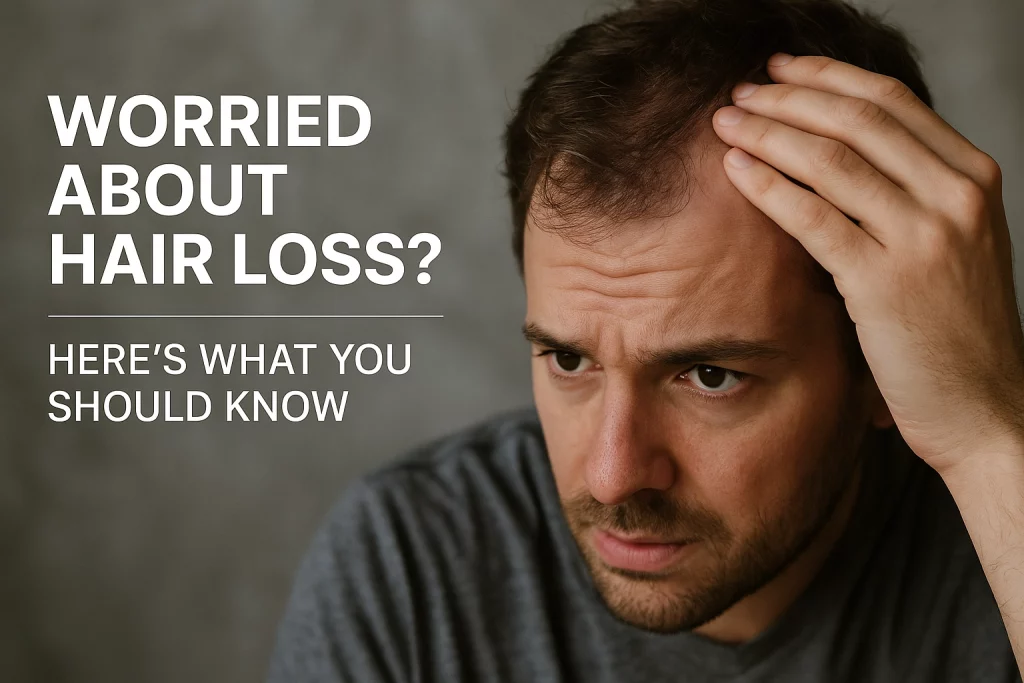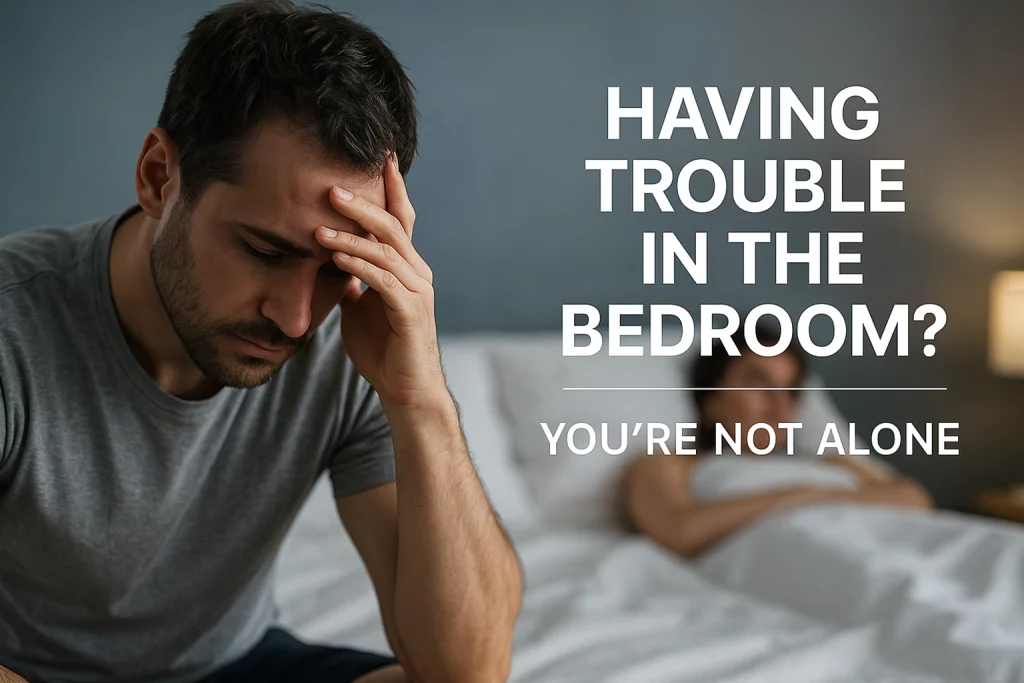Hair loss is something many people go through, but it often feels like no one talks about it. Whether it’s a receding hairline, thinning at the crown, or general shedding, noticing changes in your hair can be upsetting.
The good news is you’re not alone, and there are proven ways to understand and manage hair loss. This guide explains the causes, what treatment options are available, and how to take the first step toward protecting and restoring your hair.
Table of Contents
How Common Is Hair Loss?
Hair loss affects around two-thirds of men by age 35, and about 85% by age 50. It also affects many women, especially as they age or after hormonal changes like pregnancy or menopause.
Most cases are linked to a condition called androgenetic alopecia, also known as male or female pattern hair loss. This happens when hair follicles shrink over time, causing hair to grow thinner, shorter, and eventually stop growing.
It’s very common, and treatments are available to help slow it down and even regrow hair.
What Causes Hair Loss?
Hair loss can happen for many reasons. Understanding the cause helps determine the right treatment.
| Cause | How It Affects Hair |
|---|---|
| Genetics | Most common reason for gradual hair thinning |
| Hormones | DHT (a form of testosterone) can shrink hair follicles |
| Stress | Physical or emotional stress can trigger sudden shedding |
| Illness or medication | Health issues or drugs may interfere with hair growth |
| Poor nutrition | Lacking iron, protein or vitamins affects hair health |
What You Can Do
Identify the cause
Not all hair loss is the same. Speaking to a healthcare provider or using an online consultation can help you understand what type you have.
Use clinically approved treatments
Medications like finasteride (for men) and minoxidil (for men and women) are proven to slow or reverse pattern hair loss. These work best when started early.
You can complete a quick online hair loss check here to see if treatment is right for you.
Support hair growth naturally
Eat a balanced diet with enough iron, protein, zinc, and vitamins like D and B12. Hair health starts from the inside out.
Manage stress and sleep
High stress and poor sleep affect hormone levels, which can slow hair growth or increase shedding.
Common Questions
Is it too late to start treatment?
Not necessarily. Results are best when you start early, but even if hair loss has progressed, treatment can still help slow it down.
How long does it take to see results?
Most people start to see changes after 3 to 6 months of consistent use.
Are the treatments safe?
Yes, when prescribed correctly. Finasteride and minoxidil are widely used and backed by studies. Side effects are rare but possible, which is why an assessment is needed first.
Will it all grow back?
Some regrowth is possible, but results vary. The goal is to preserve the hair you have and improve thickness.
You’re Not Alone in This
Hair loss can affect how you feel, but support is available. There are safe, effective treatments that can make a real difference over time.
You can start with a simple online consultation here and get personalised advice on what might work best for your hair.


